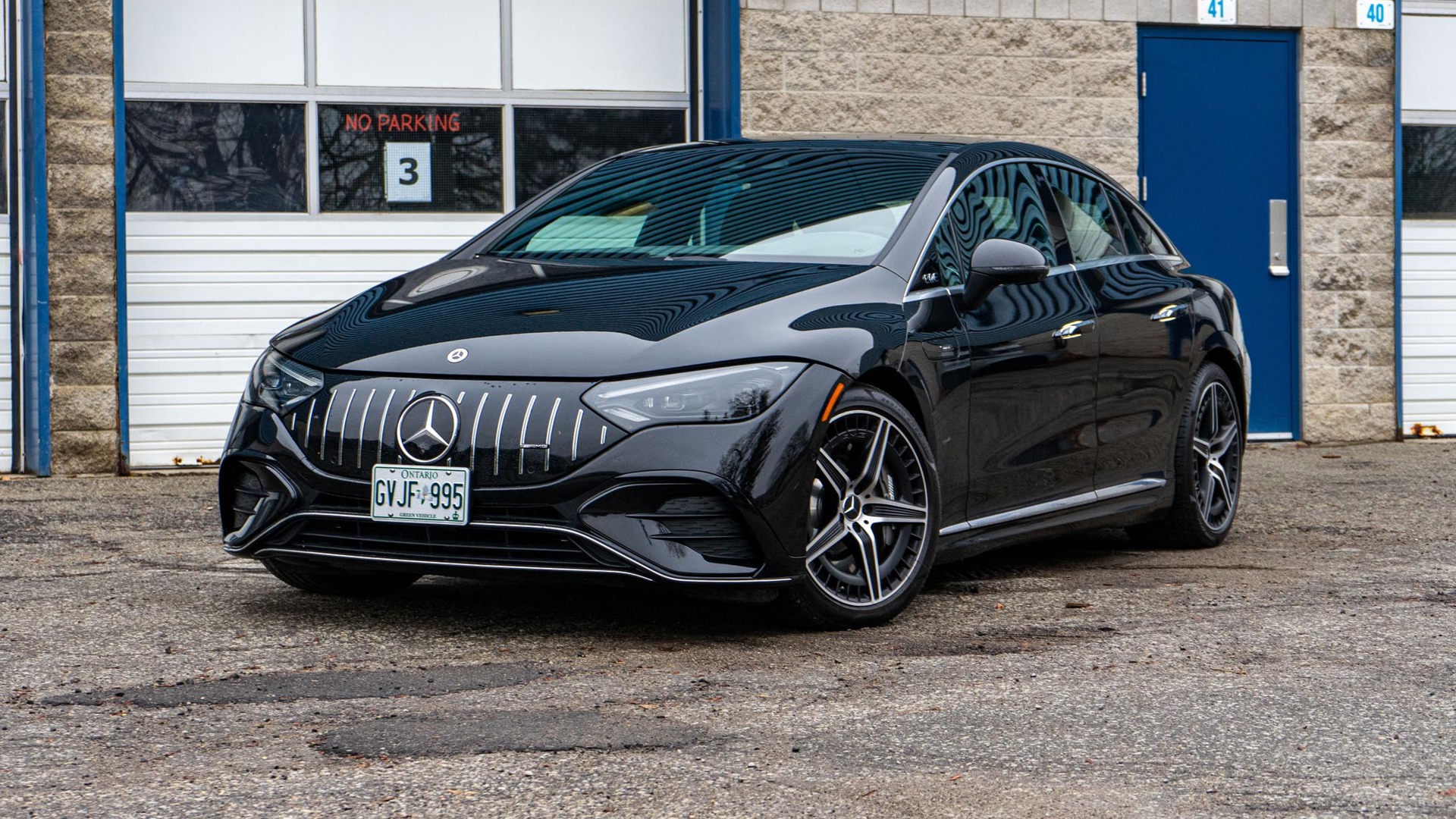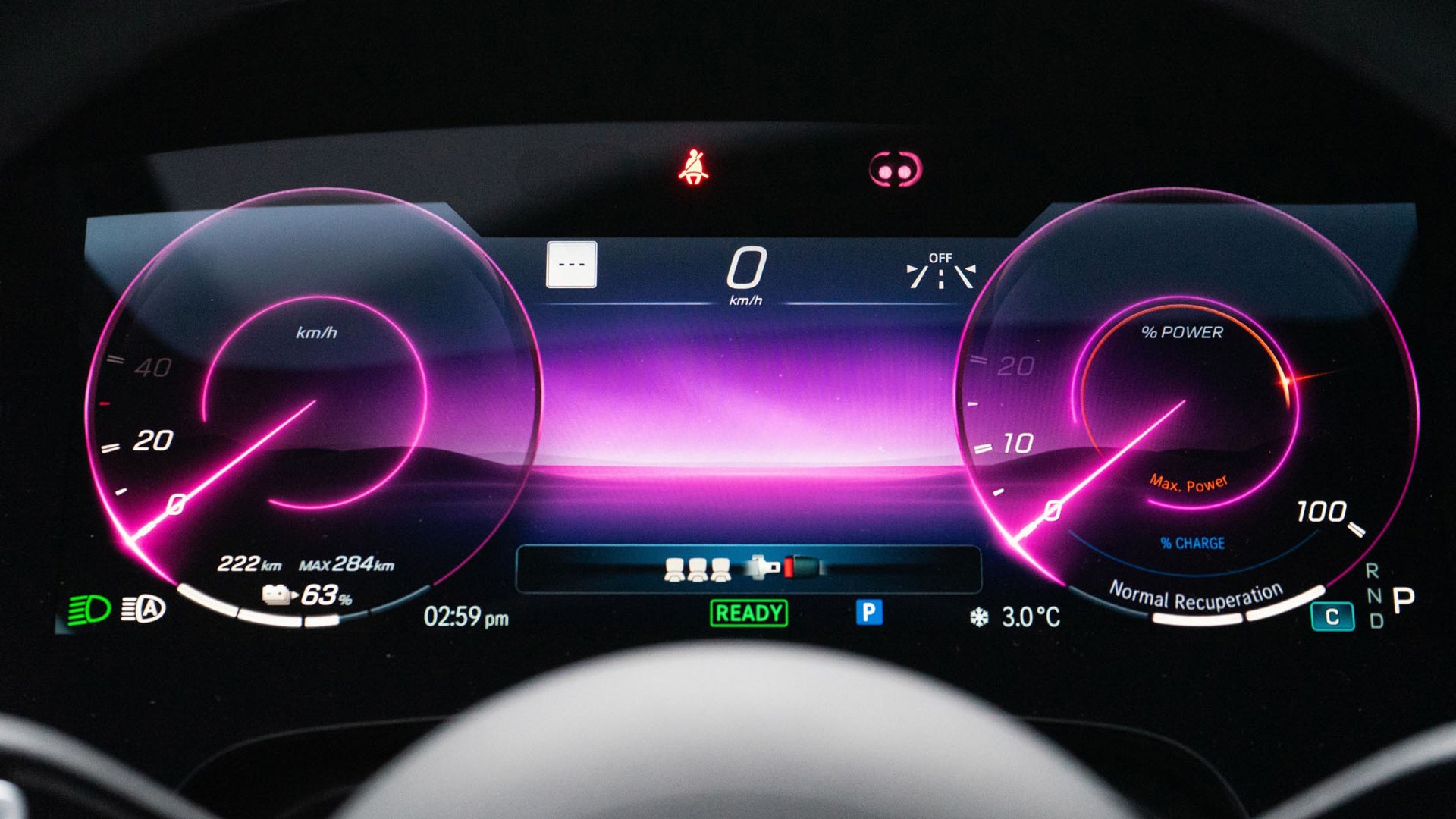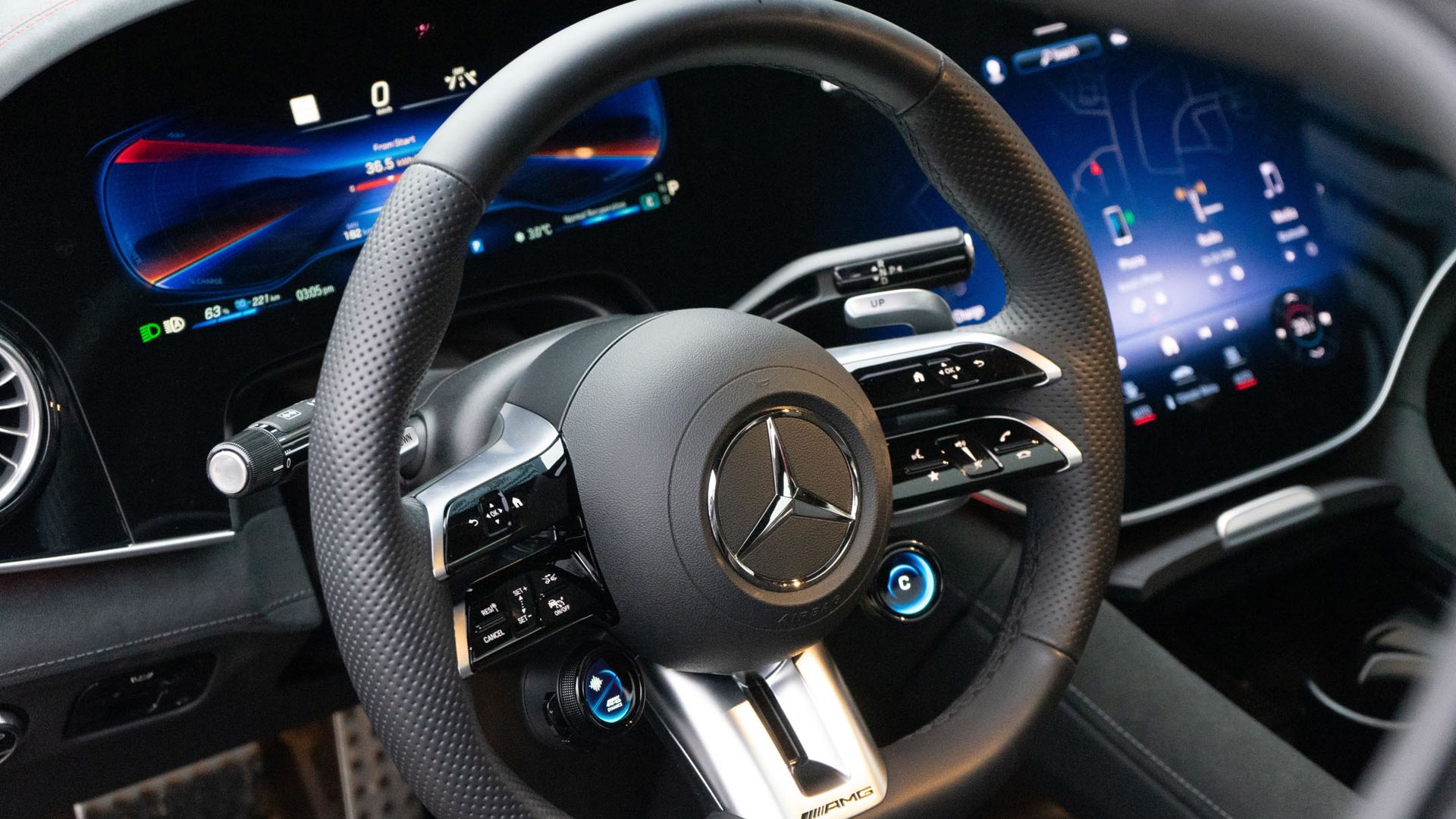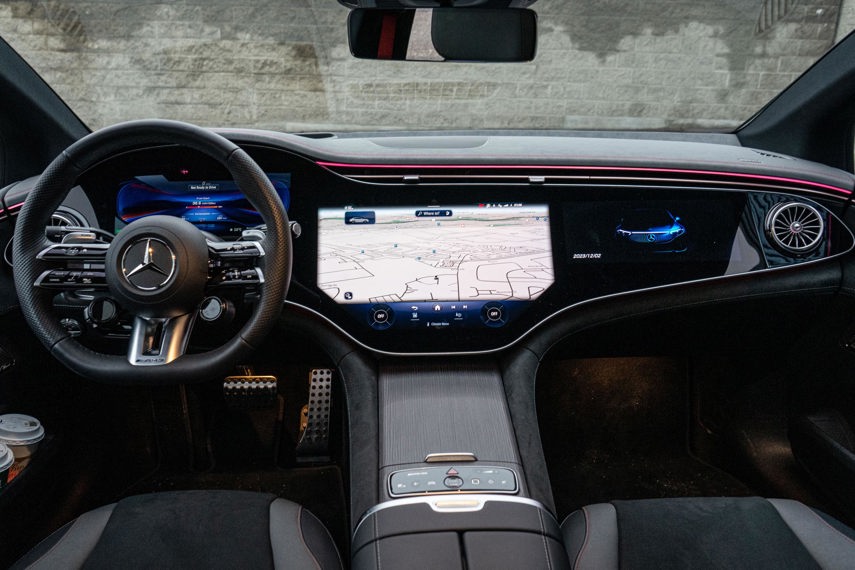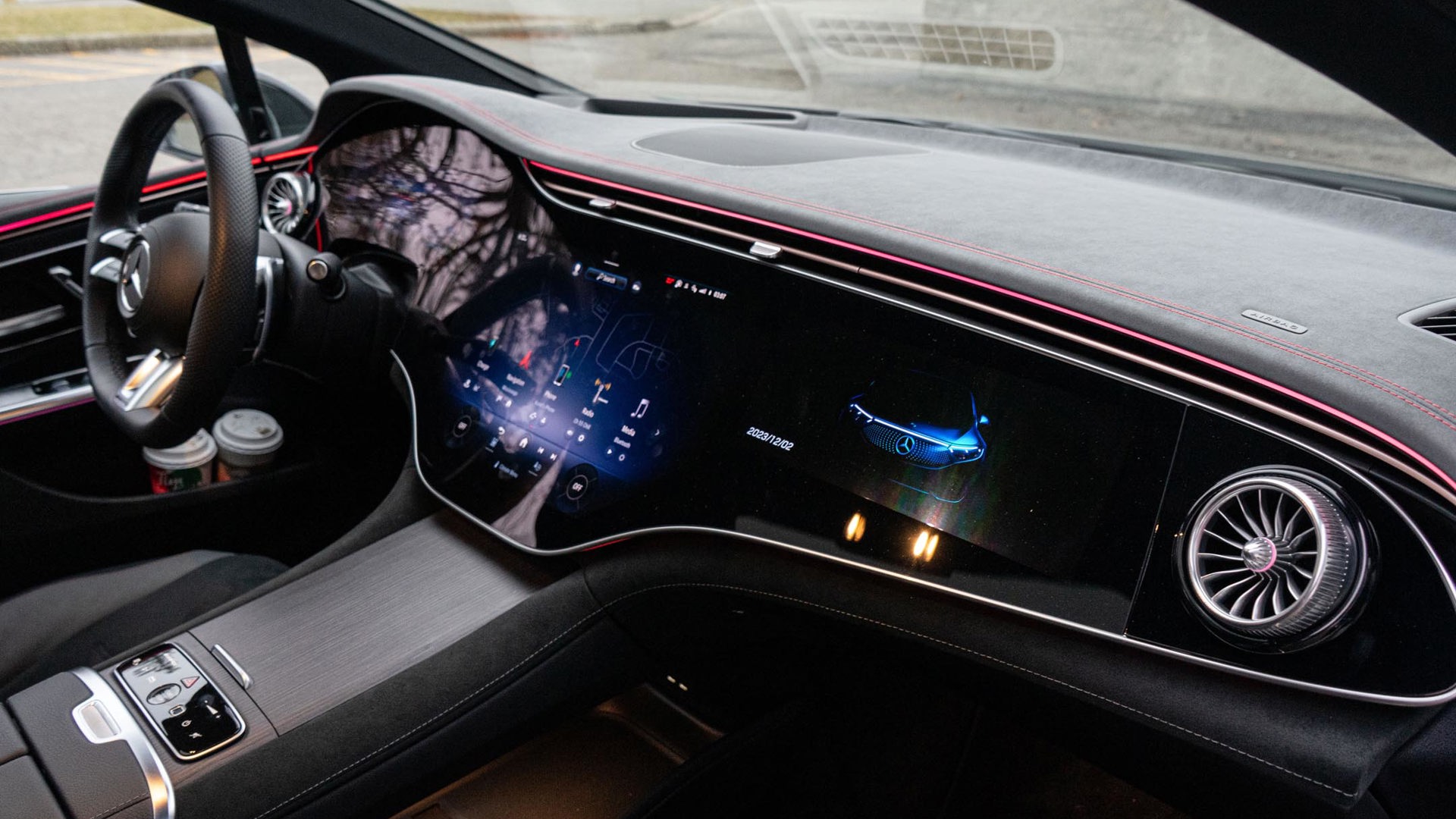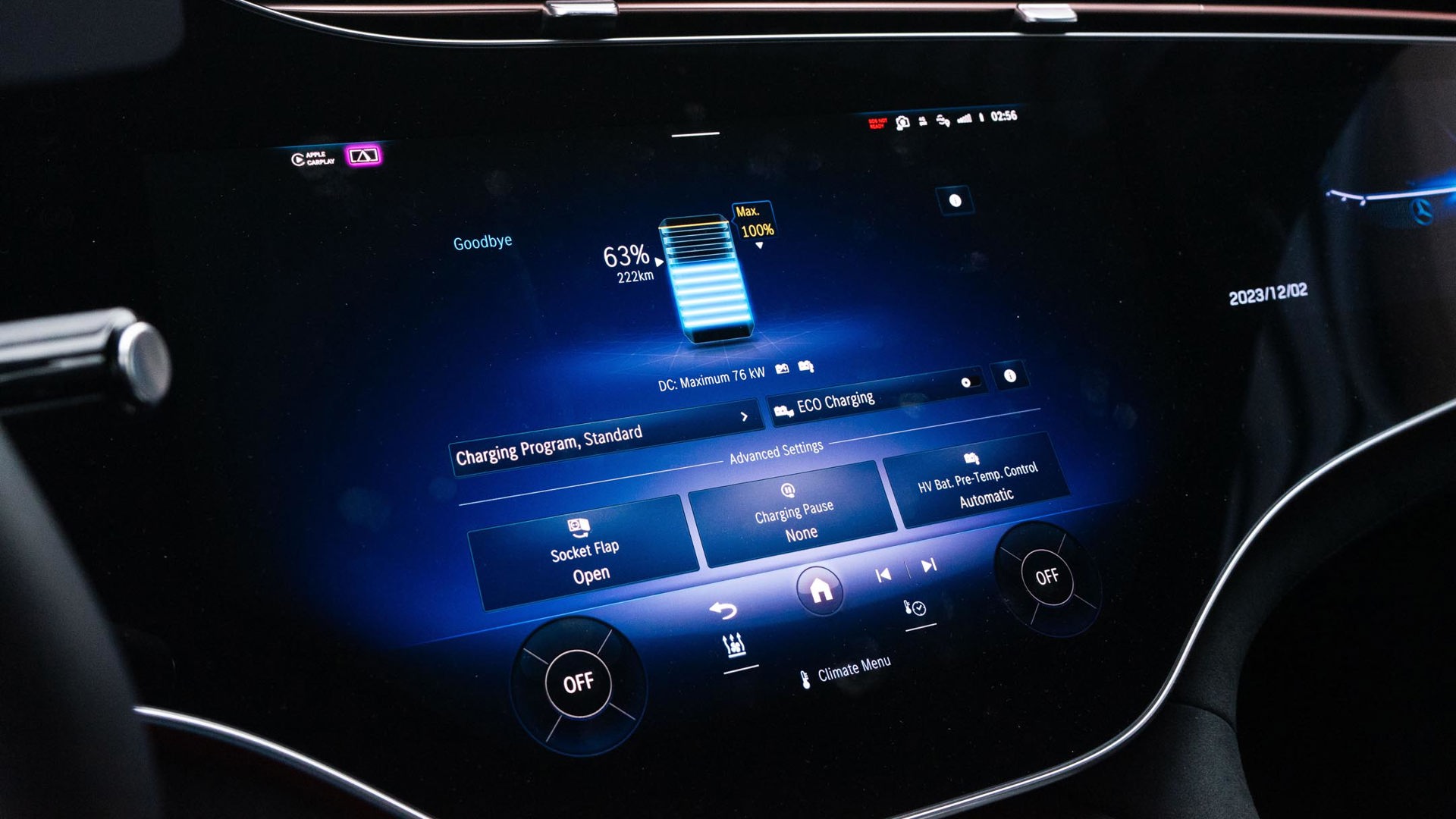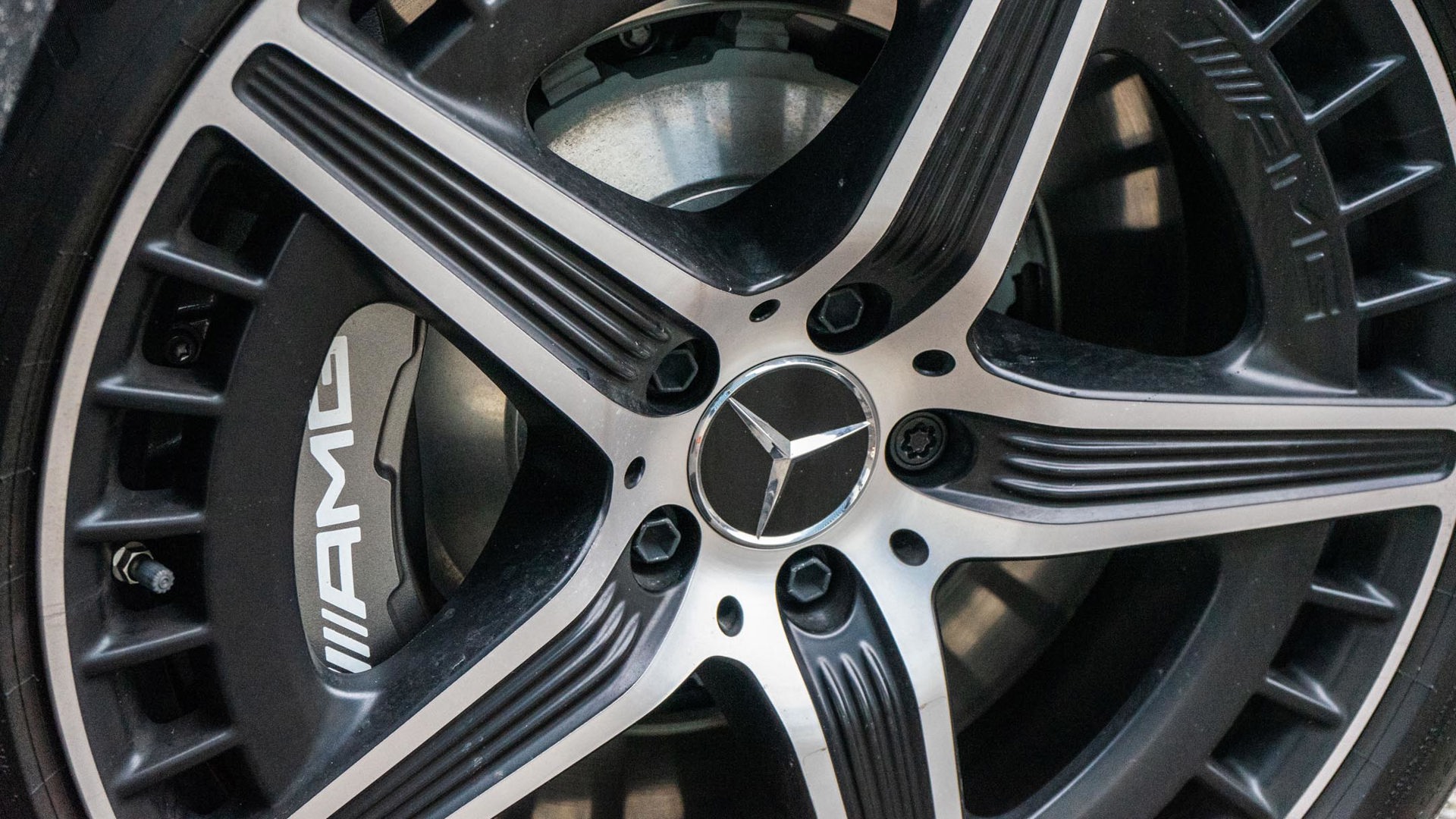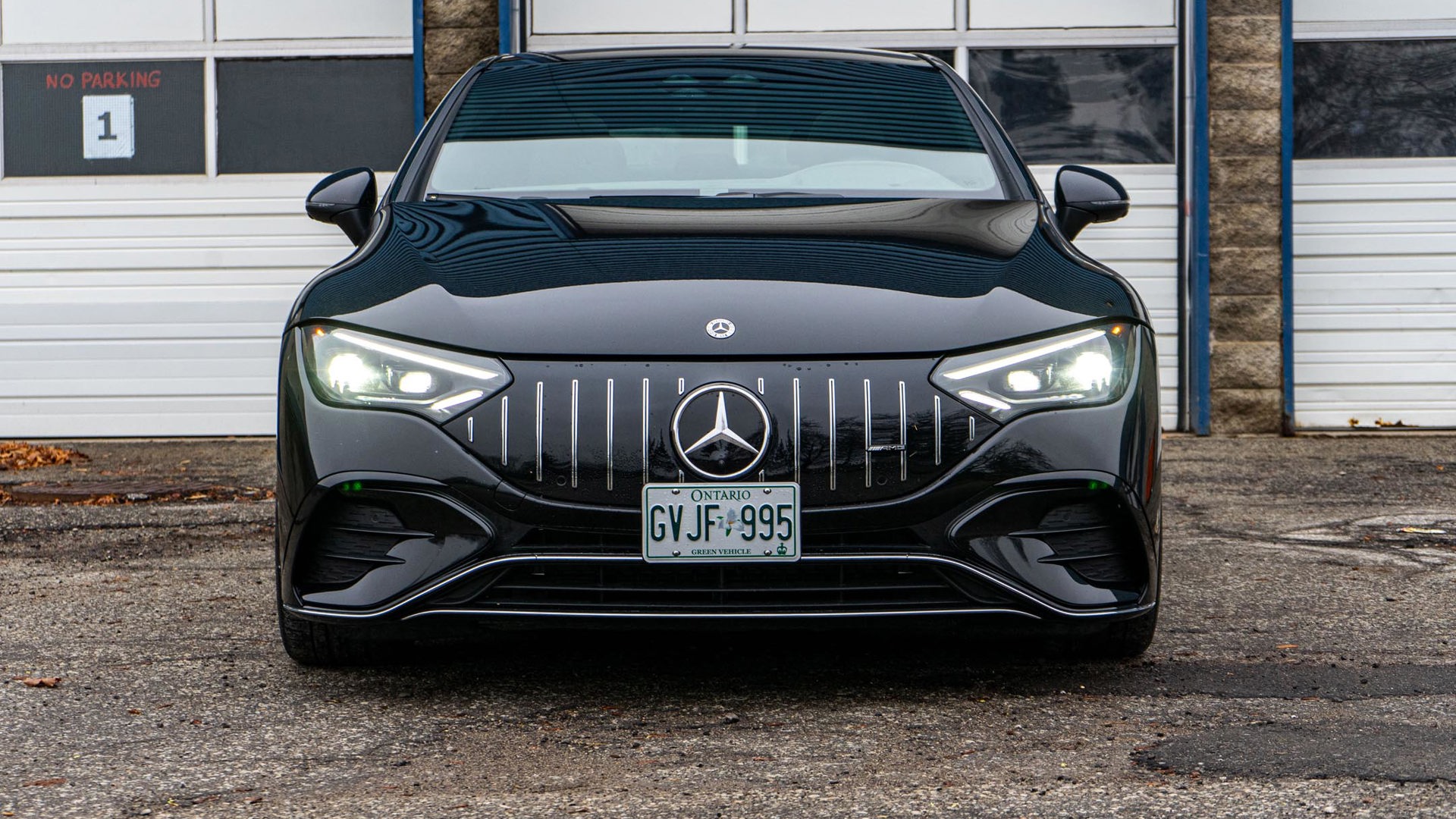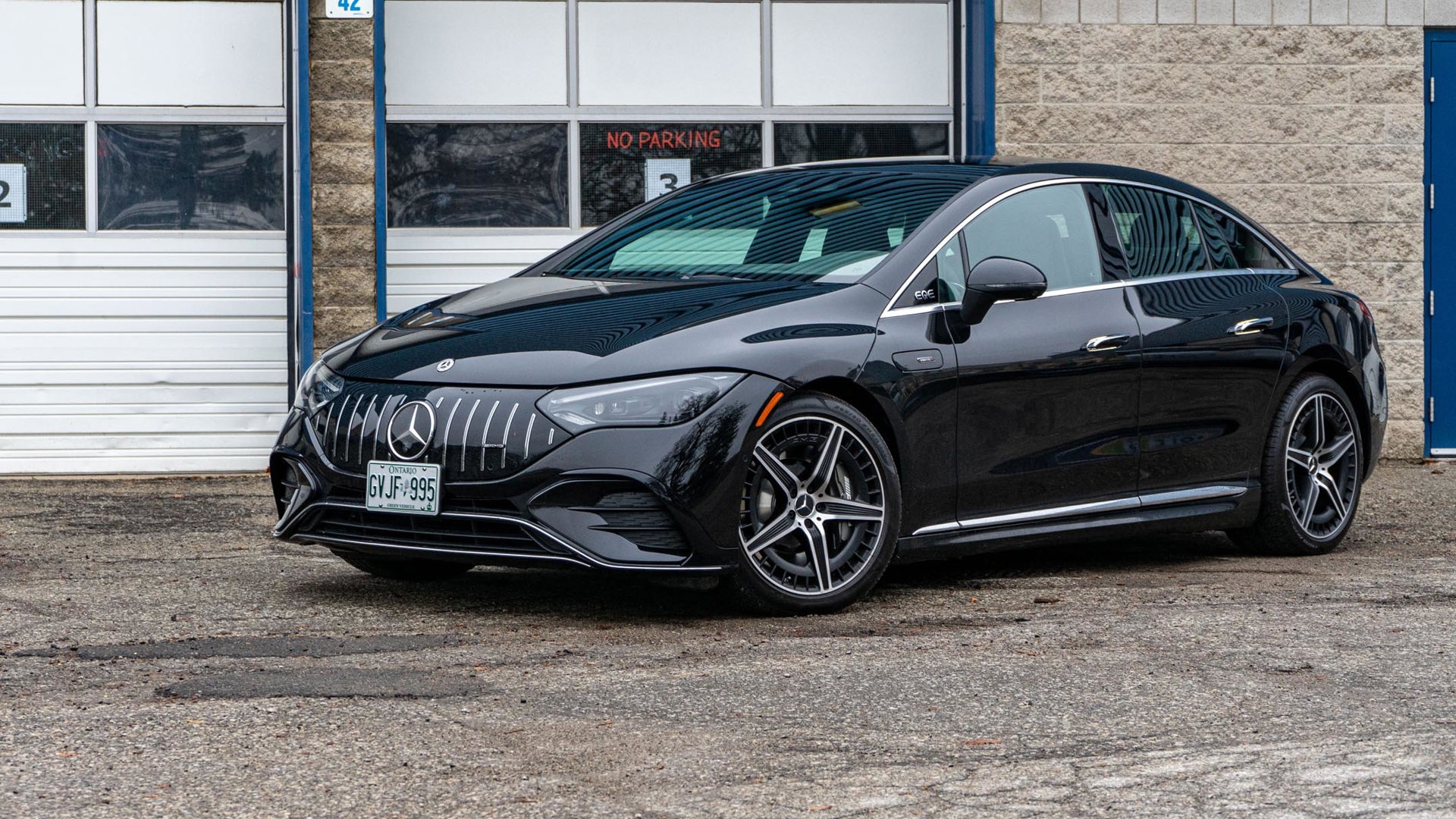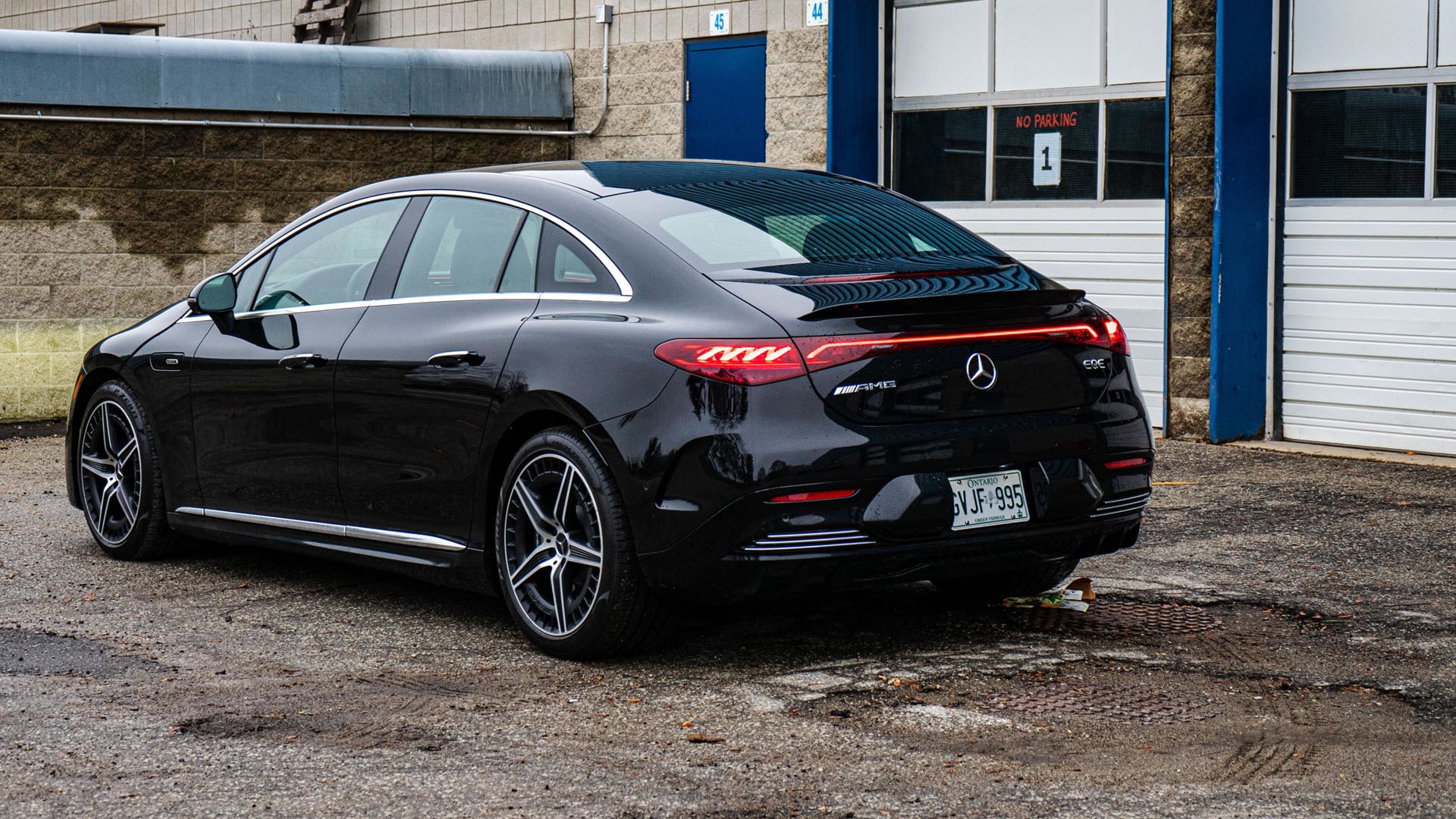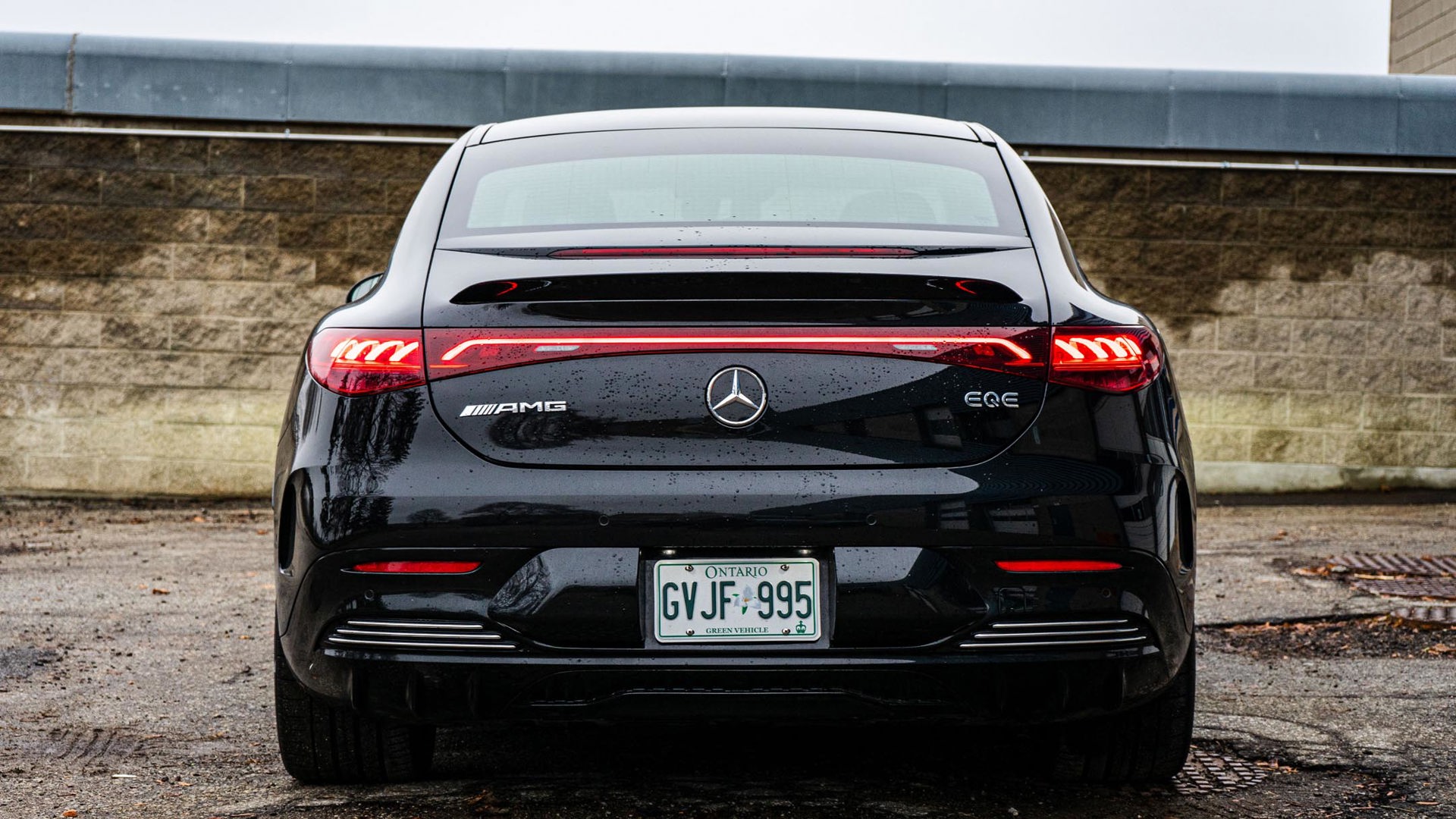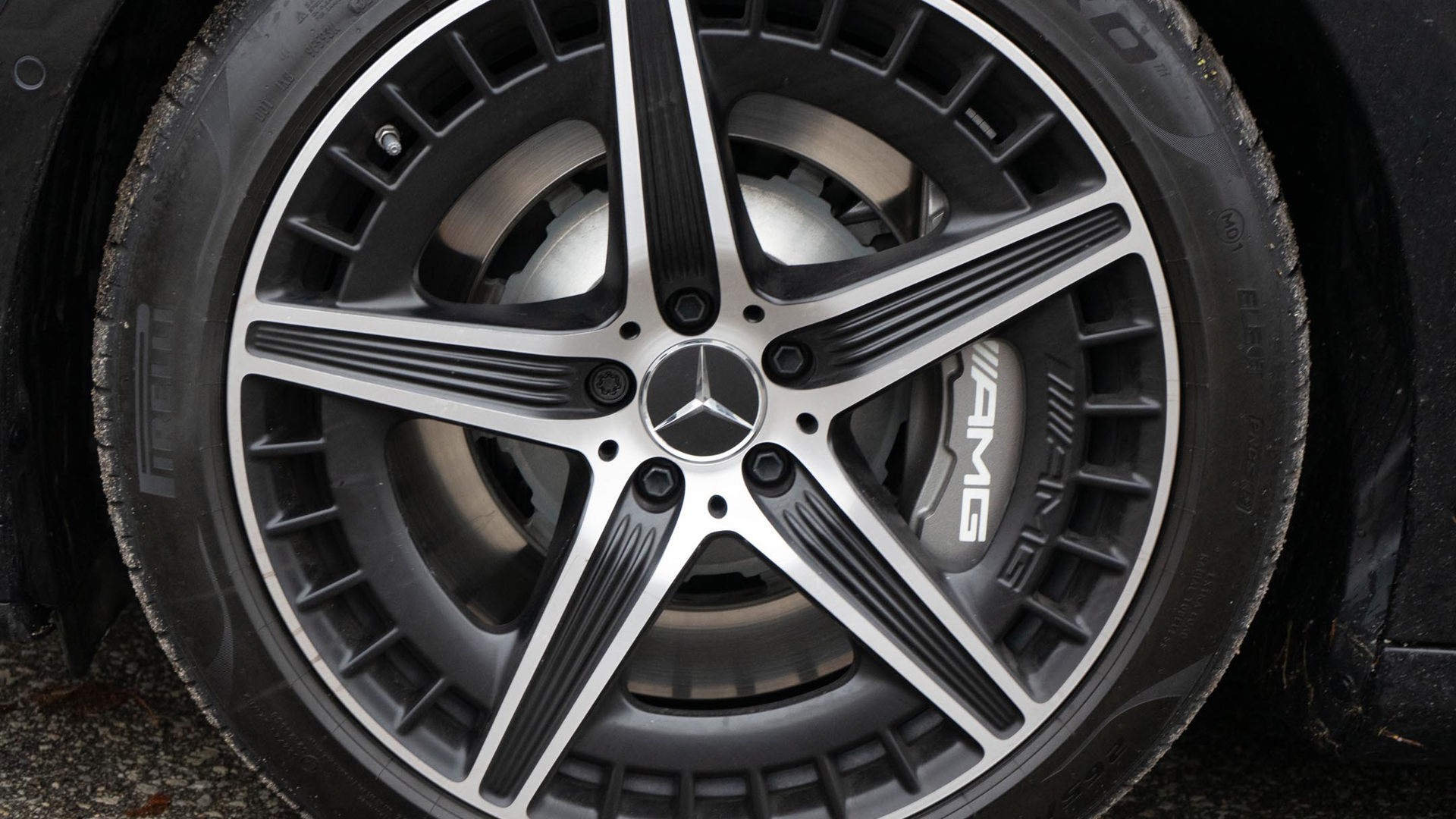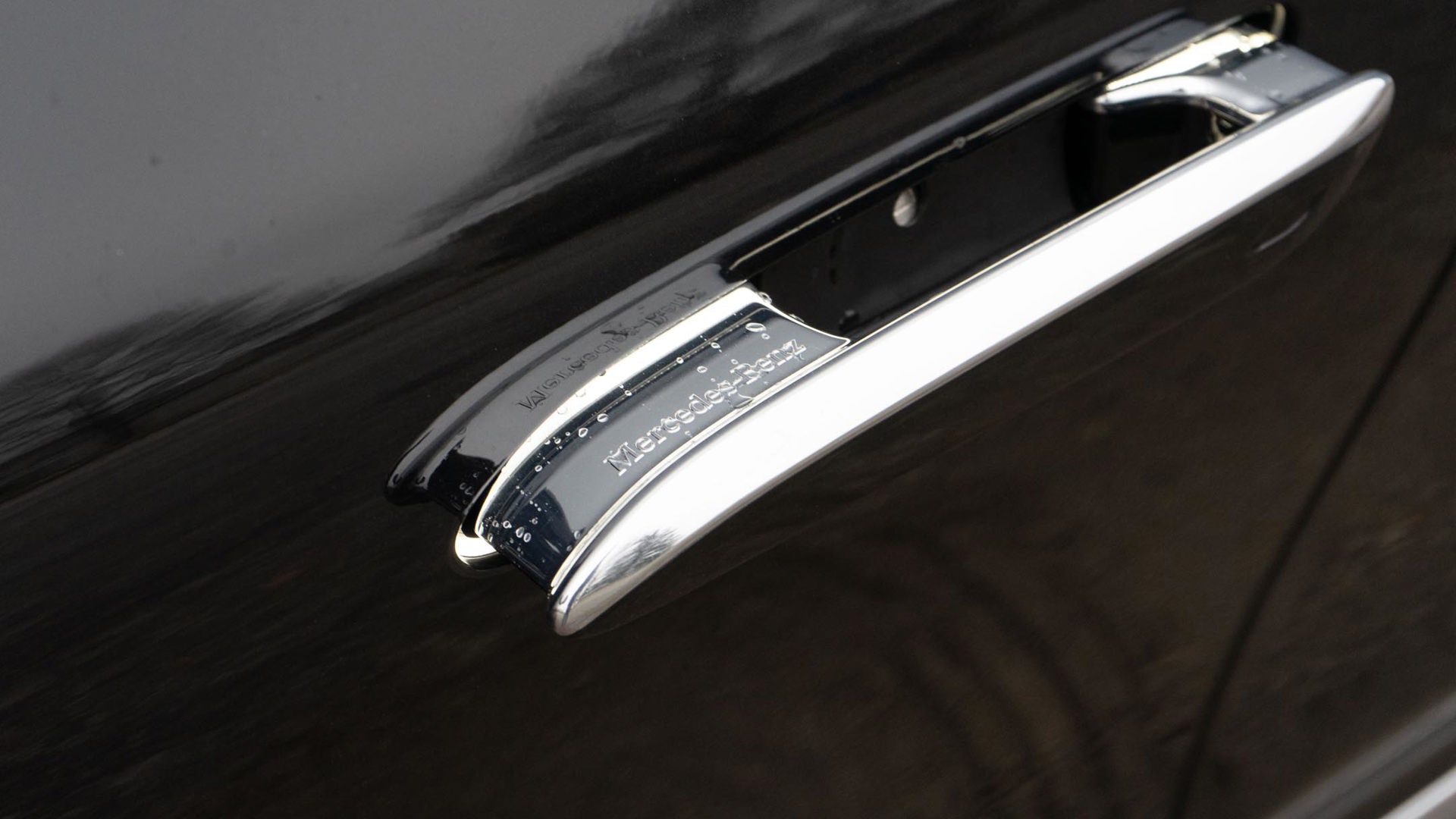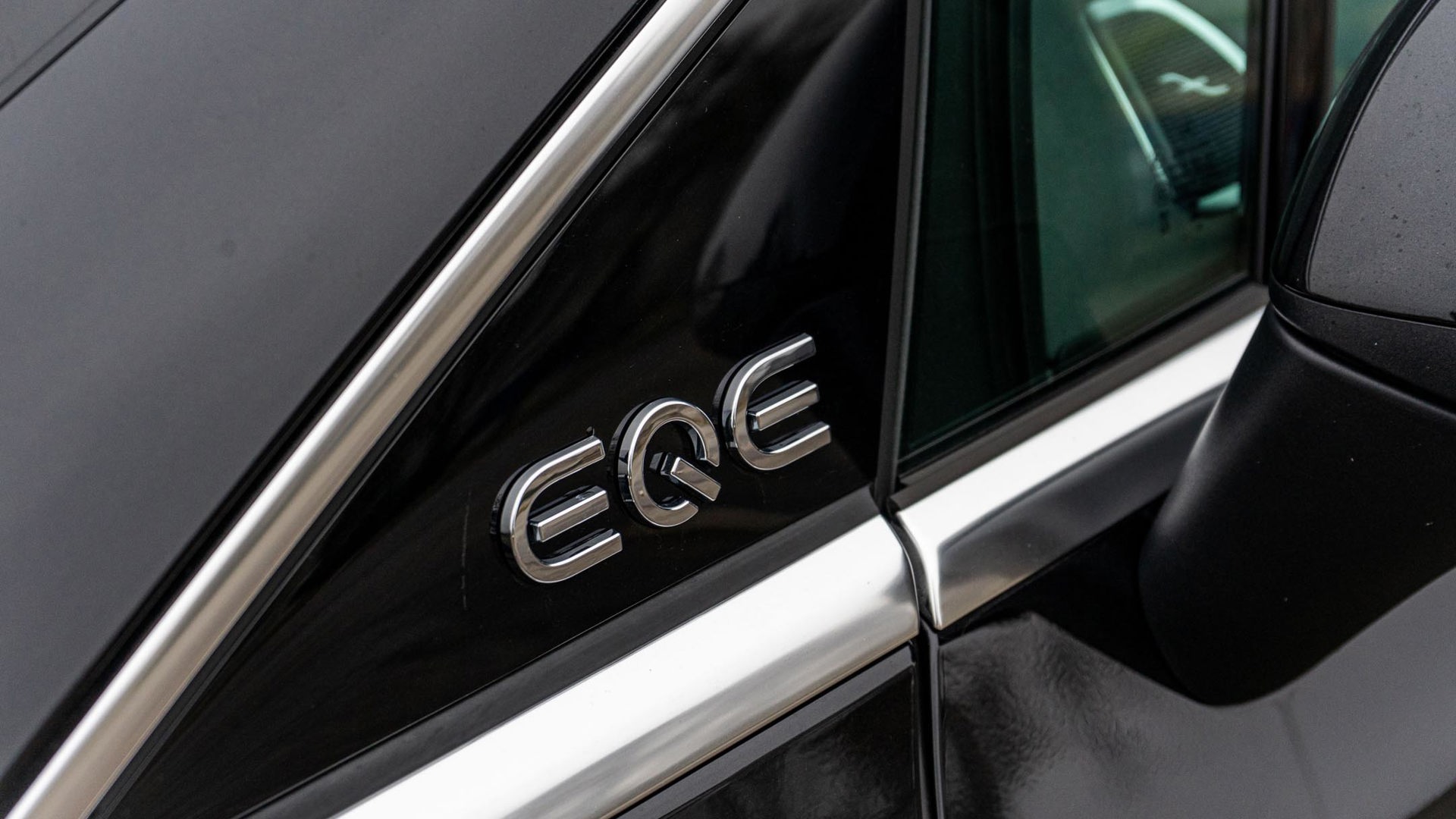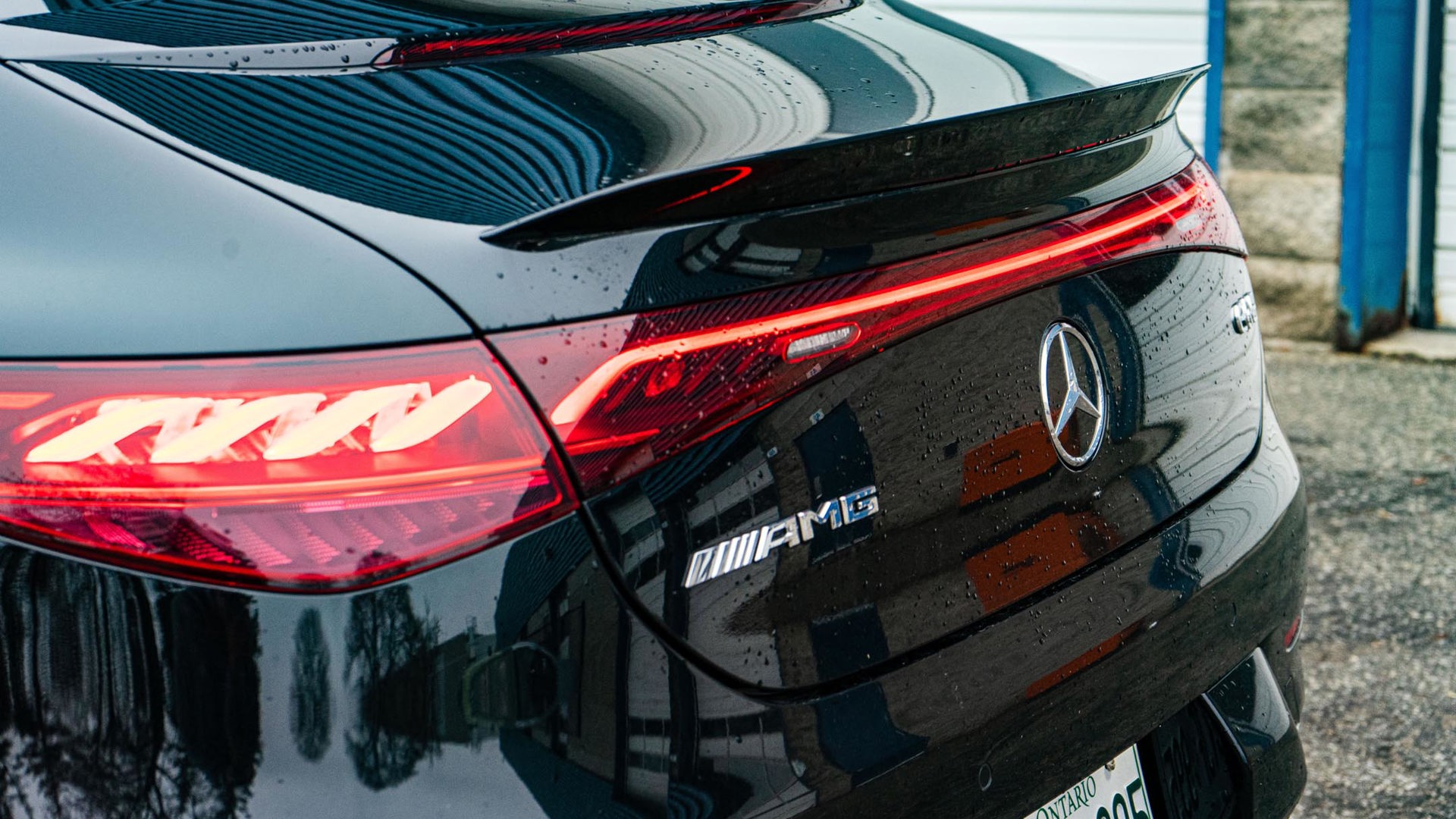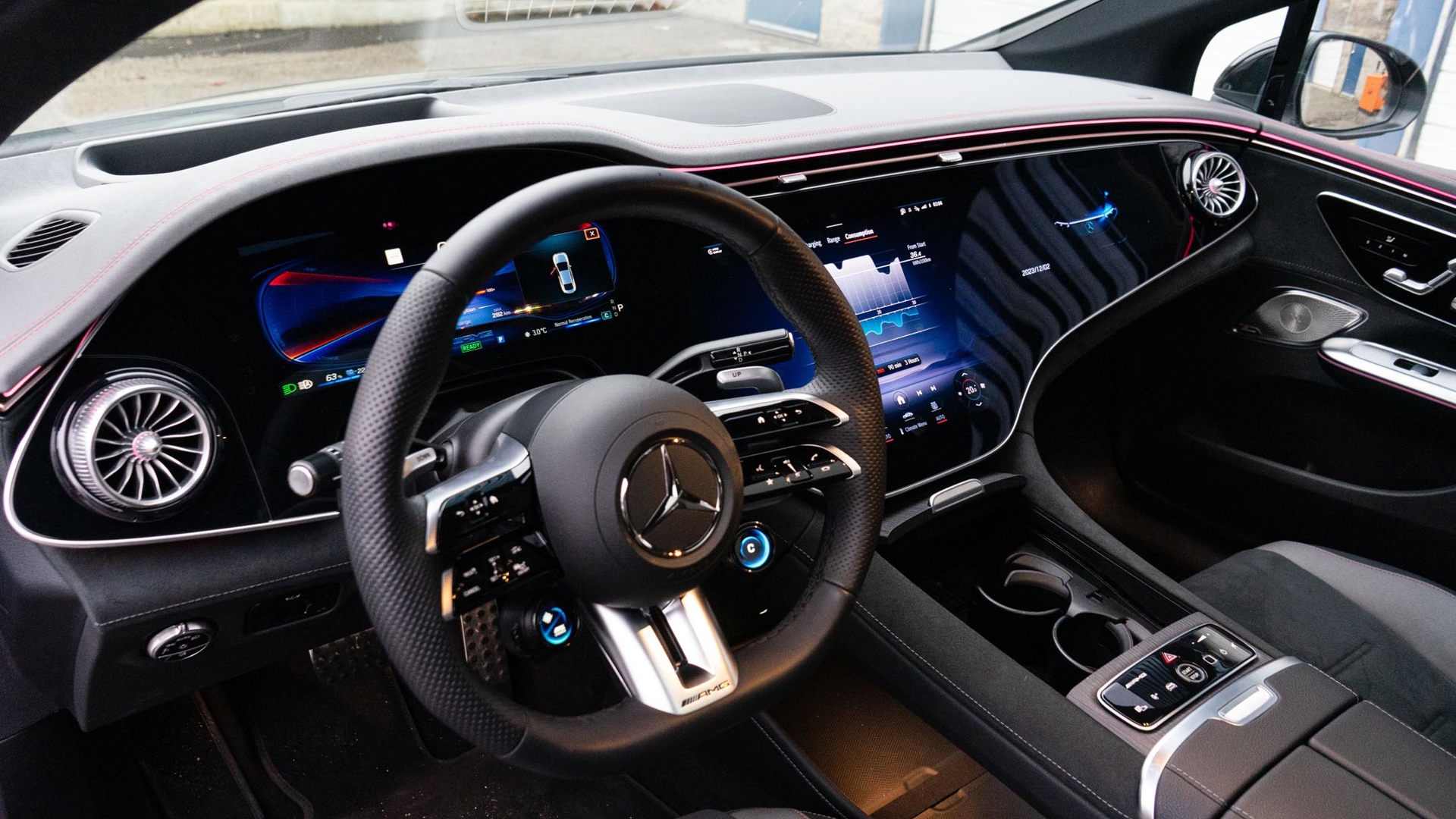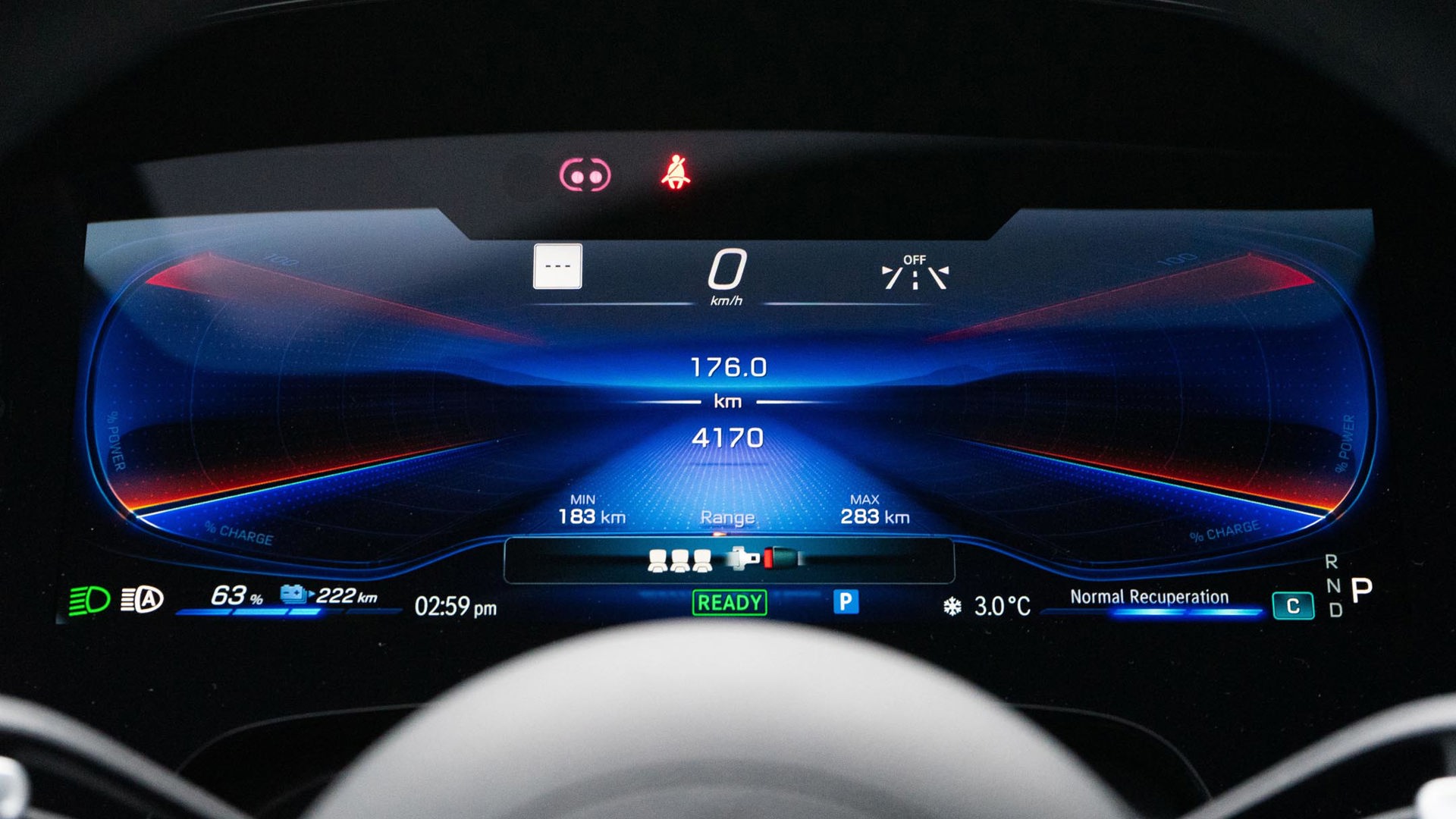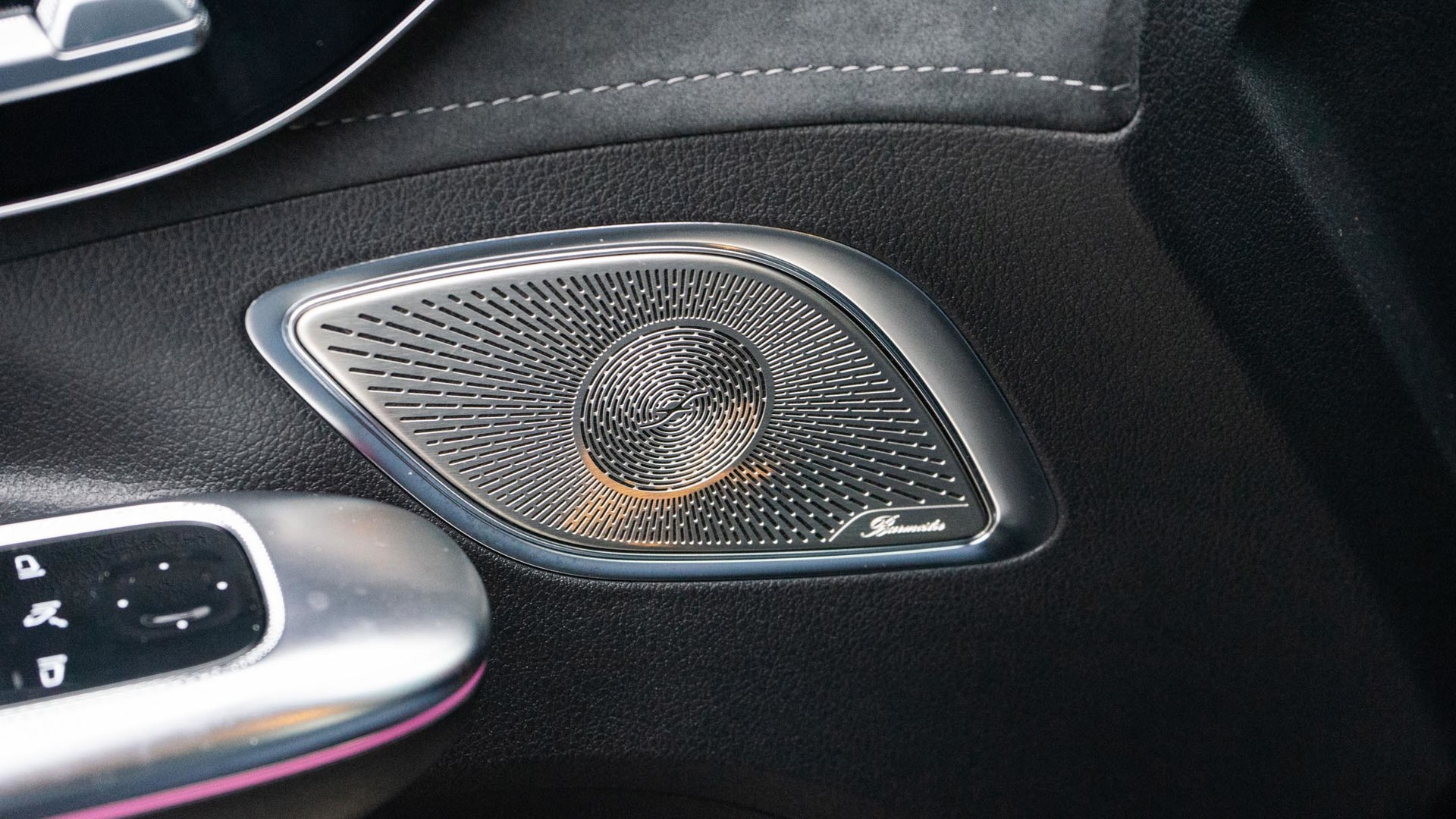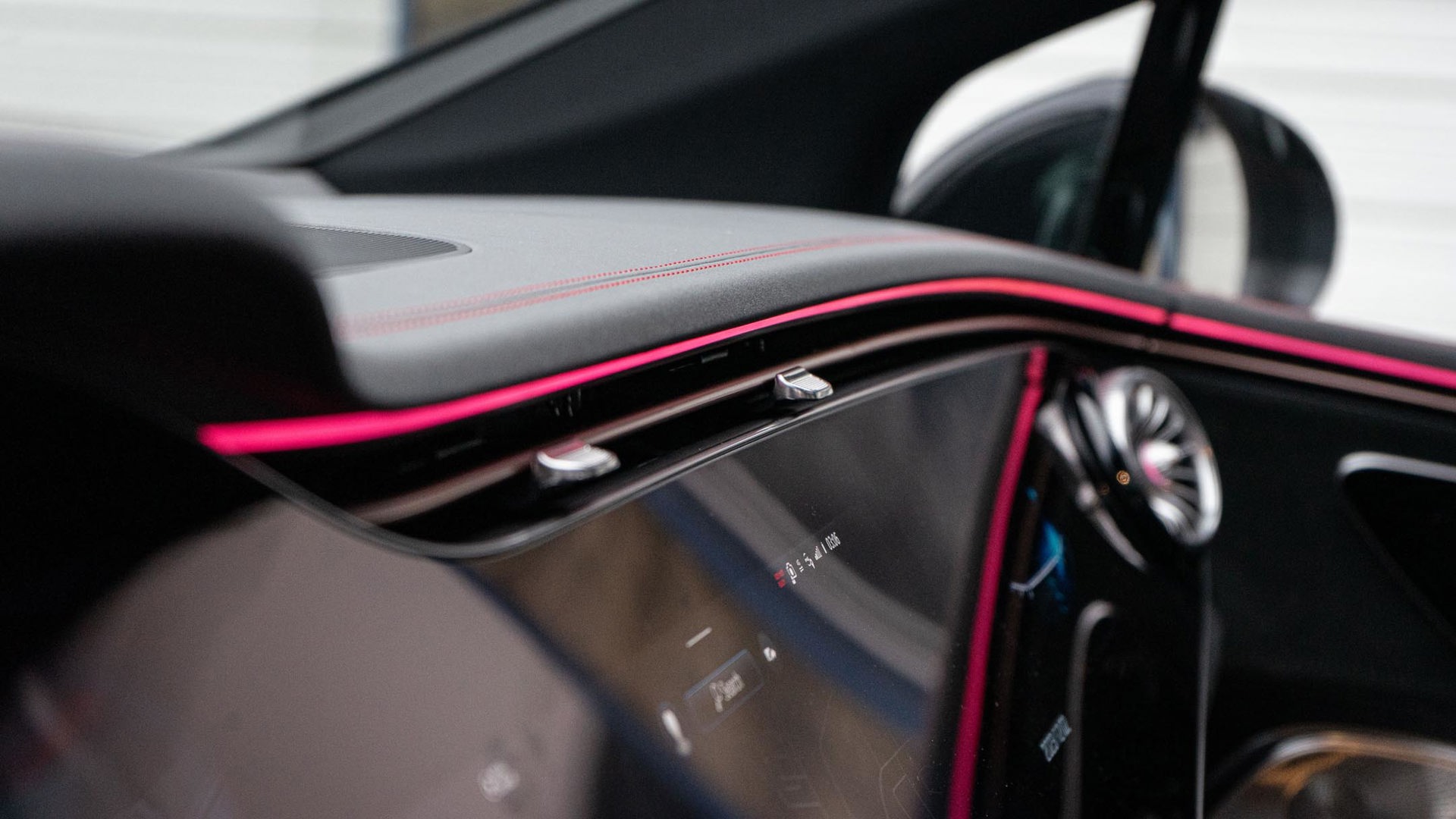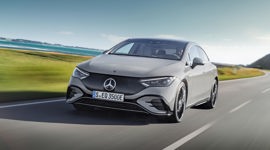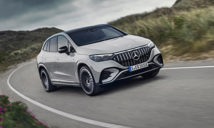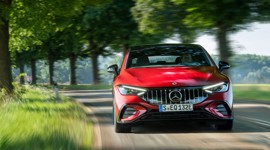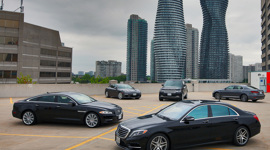Rather than outfit existing models with battery electric drivetrains, Mercedes built a distinct line of electric vehicles (EVs) on unique platforms as counterparts to their legacy nameplates. The EQE sedan fills the shoes of the E-Class – both are mid-size luxury sedans and target a similar audience. Both also have AMG versions. The E 63 S is old-school AMG at its best, with a thundering V8 and an exhaust note that would make anyone with a passing interest in cars weak at the knees. The AMG EQE might look like a jellybean, but it’s even more powerful, packing a wallop from its dual electric motors. In all respects, it’s a super sedan and there’s a lot to like, but after a week of driving one, I found just as much to dislike as well.
Pro: It’s Mega Fast
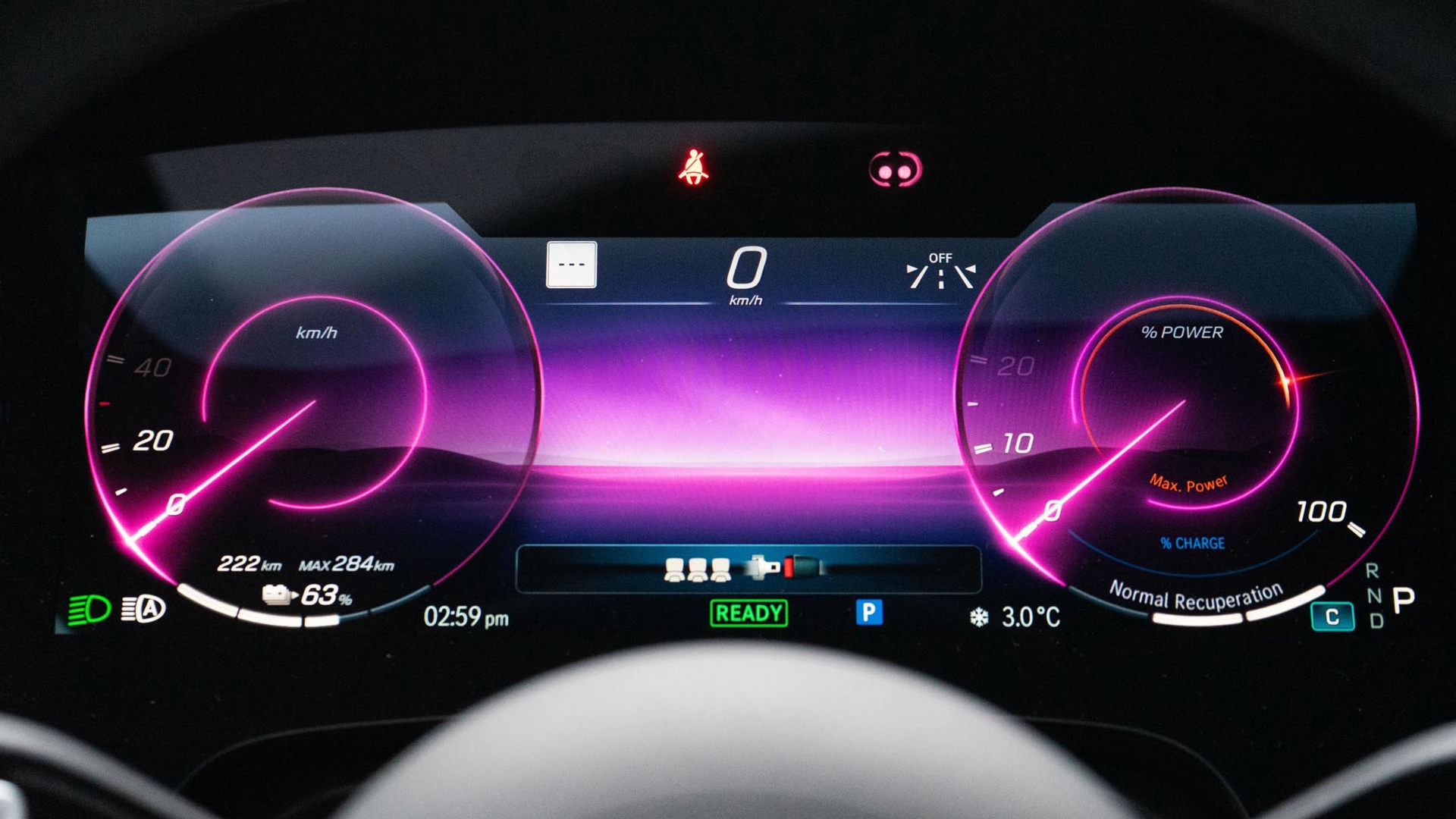
High-powered EVs have taken acceleration to new heights. The AMG EQE has so much power and torque I couldn’t properly experience it in its entirety. The weather was cold, we had an early bout of snow, and the car was just a week away from having its summer tires switched over to winter rubber. The EV has 677 hp and up to 738 lb-ft of torque in boost mode, figures that would make a Dodge Challenger Hellcat blush, so the AMG EQE is seriously quick. The few windows of opportunity when I could floor it left me breathless. And it’s not just fast from a standstill; this AMG is fast all the time and in any of its drive modes. It’s also silent, and the synthesized acceleration soundtrack isn’t too bad. The E 63 is a beast, but this AMG EQE is mega fast.
Pro: It Handles Really Well
The 2,511-kg AMG doesn’t exactly start with the best weight for a corner carver, but its 90.6-kWh battery pack is as low in the chassis as possible, which helps keep its centre of gravity low. That’s a cornerstone of any good performance car. If you get into it expecting a Miata, you’ll probably be disappointed, but compared to the E 63 S and other mid-size German sport sedans, this AMG is right on the money. It has grip for days, body roll is well controlled, and the steering is quick and precise. It’s easy to place the nose of the car exactly where you want it, and the rear follows without hesitation. Rear-wheel steering masks the AMG’s size and weight, and the rear motor is more powerful than the front, so it feels more like a rear-wheel drive car. And you don’t pay for it with a bone-shattering ride; the AMG’s air suspension is supple yet still firm enough to have fun on twisty roads.
Pro: It Has an Epic Interior
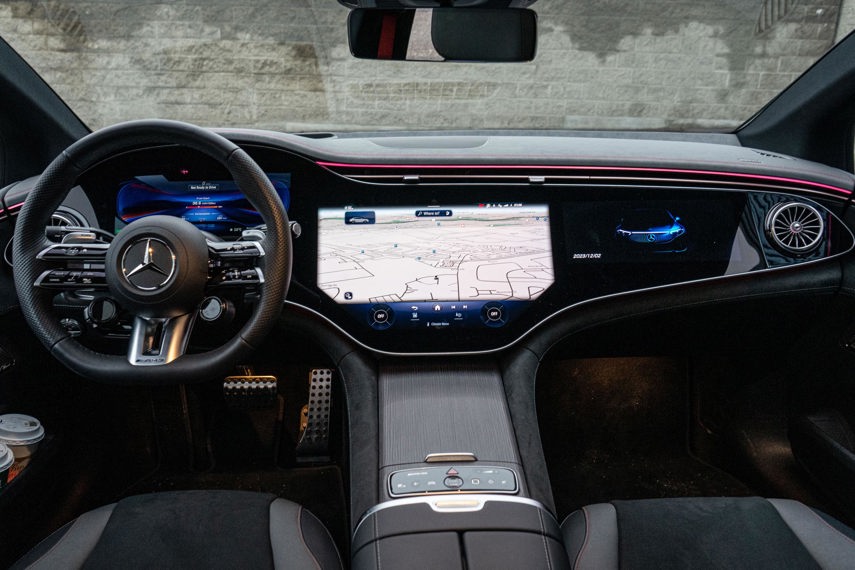
Mercedes is tough to beat when it comes to ambient lighting because it’s everywhere: on the air vents, on the door panels, bordering all the trim, and it’s even on the seats. It might sound tacky, but it looks terrific and will surely wow anyone who sees it at night. The lights animate when you change the cabin temperature or drive mode, but drivers can also customize it by picking from a menu of preset colour combinations. The displays are gorgeous and highly customizable with stunning visuals. Then there are the copper-coloured accent strips, artfully cool jet-turbine vents, and distressed leather surfaces that wrap around you like an intimate speed boat. It’s a high-tech luxury environment that’s well executed. Almost all of it.
Cons: The Hyperscreen Is All Hype
Yes, I just went on about how nice the cabin is, but there’s one issue – the Hyperscreen. It replaces the rather nice centre screen with one giant 55-inch panel of glass that stretches across the dashboard from A-pillar to A-pillar. Three separate screens are housed under this glass, and while it looks good in pictures and will probably impress some of your friends, living with it is another story. In a few days, you’ll have 55 inches worth of smudges and fingerprints, and that’s all you’ll notice. The sun also washes it out constantly. To make matters worse, it’s a $10,000 option. The standard screen is perfect; it’s more than big enough and might actually make the interior look better than it does with the Hyperscreen.
Cons: There’s No Heat Pump
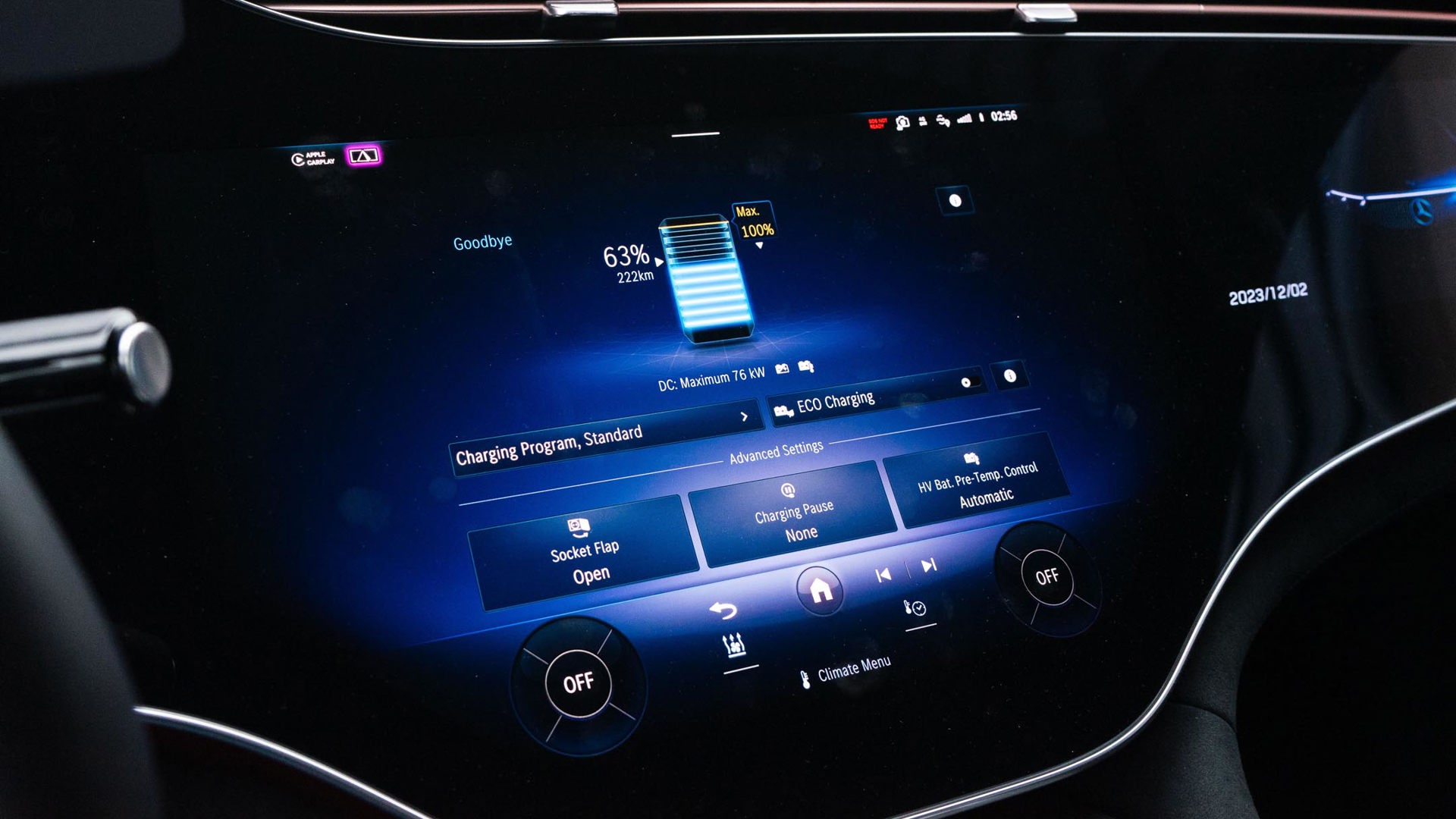
Heat pumps are ingenious devices that move waste heat from a car’s mechanical and electrical components into the cabin to keep it warm. It’s a more efficient way to heat the cabin than the resistive-type heaters found in cars without heat pumps, which use a lot of energy. Some can also be used in reverse to cool the car. In colder months, having a heat pump helps preserve the battery’s driving range instead of sapping the range to keep the cabin warm. Even some of the most affordable EVs have a standard heat pump.
The AMG I tested did not have a heat pump, which is a big letdown at this price point. There are reports that the 2024 AMG EQE will get a heat pump, but they aren’t available yet. The EQE AMG needed about 46 kWh of energy to travel 100 km when it was -1 degrees Celsius outside. That’s about double its European-rated consumption of 23.3 kWh/100 km.
Cons: The Brakes Suck
Although the brakes look really cool with massive rotors and large AMG-branded calipers, braking smoothly is extremely difficult. The transition from regenerative brakes to mechanical is rough, and the pedal feel is far from linear. The amount of pressure you need to apply feels like it’s always changing, so you need to keep guessing how much braking force is required to stop. Apparently, this is by design. Mercedes equips the EQE with it calls an intelligent brake booster, which manages the balance between electric recuperation and the hydraulic brakes for maximum efficiency. It sounds good on paper, but in practice, the brakes inspire little confidence, which is the opposite of what performance car brakes should be like.
